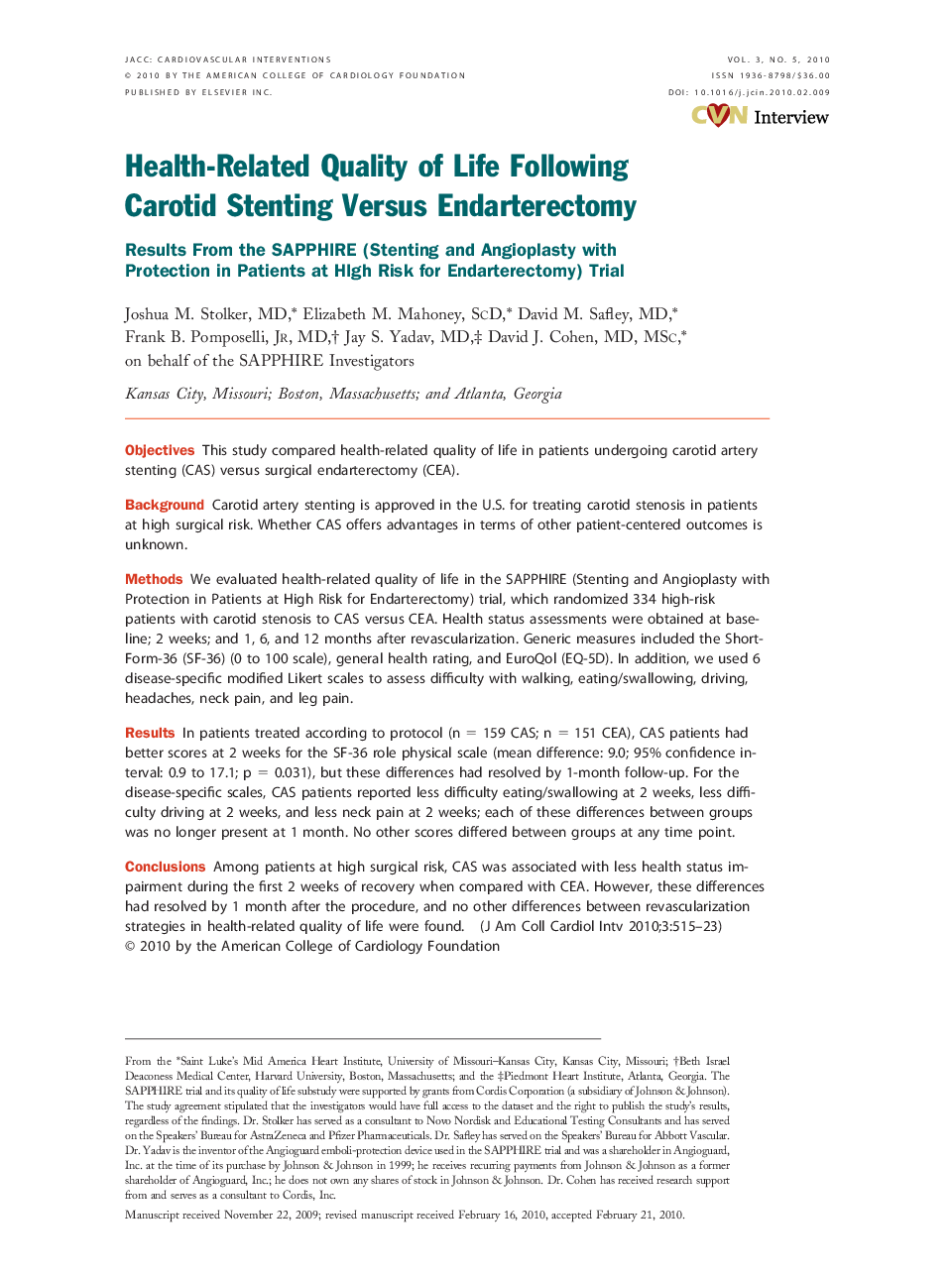| کد مقاله | کد نشریه | سال انتشار | مقاله انگلیسی | نسخه تمام متن |
|---|---|---|---|---|
| 2941300 | 1177064 | 2010 | 9 صفحه PDF | دانلود رایگان |

ObjectivesThis study compared health-related quality of life in patients undergoing carotid artery stenting (CAS) versus surgical endarterectomy (CEA).BackgroundCarotid artery stenting is approved in the U.S. for treating carotid stenosis in patients at high surgical risk. Whether CAS offers advantages in terms of other patient-centered outcomes is unknown.MethodsWe evaluated health-related quality of life in the SAPPHIRE (Stenting and Angioplasty with Protection in Patients at High Risk for Endarterectomy) trial, which randomized 334 high-risk patients with carotid stenosis to CAS versus CEA. Health status assessments were obtained at baseline; 2 weeks; and 1, 6, and 12 months after revascularization. Generic measures included the Short-Form-36 (SF-36) (0 to 100 scale), general health rating, and EuroQol (EQ-5D). In addition, we used 6 disease-specific modified Likert scales to assess difficulty with walking, eating/swallowing, driving, headaches, neck pain, and leg pain.ResultsIn patients treated according to protocol (n = 159 CAS; n = 151 CEA), CAS patients had better scores at 2 weeks for the SF-36 role physical scale (mean difference: 9.0; 95% confidence interval: 0.9 to 17.1; p = 0.031), but these differences had resolved by 1-month follow-up. For the disease-specific scales, CAS patients reported less difficulty eating/swallowing at 2 weeks, less difficulty driving at 2 weeks, and less neck pain at 2 weeks; each of these differences between groups was no longer present at 1 month. No other scores differed between groups at any time point.ConclusionsAmong patients at high surgical risk, CAS was associated with less health status impairment during the first 2 weeks of recovery when compared with CEA. However, these differences had resolved by 1 month after the procedure, and no other differences between revascularization strategies in health-related quality of life were found.
Journal: JACC: Cardiovascular Interventions - Volume 3, Issue 5, May 2010, Pages 515–523